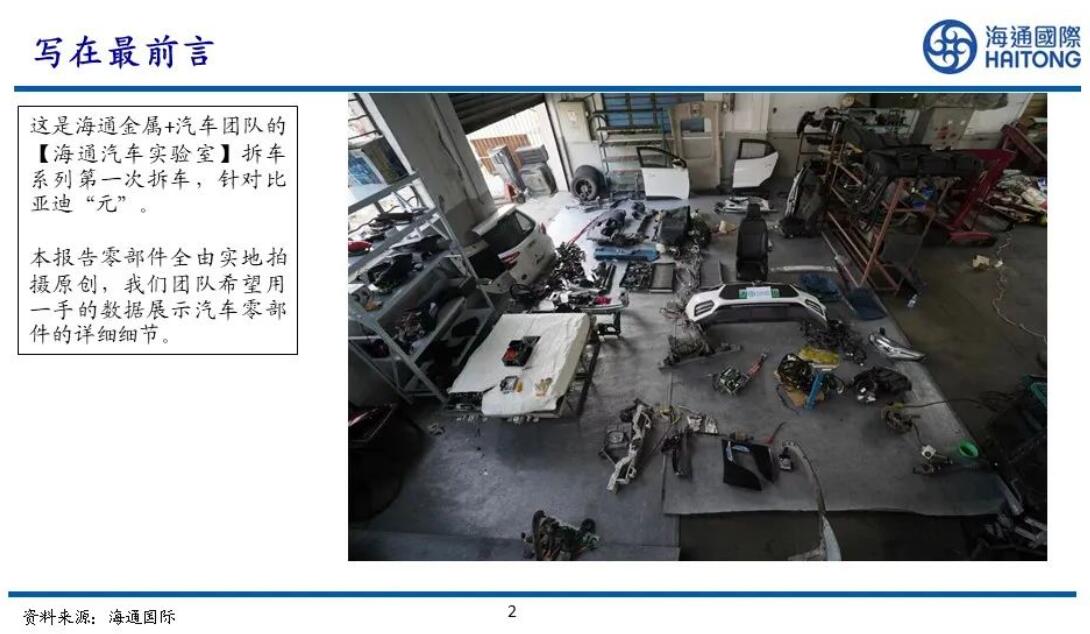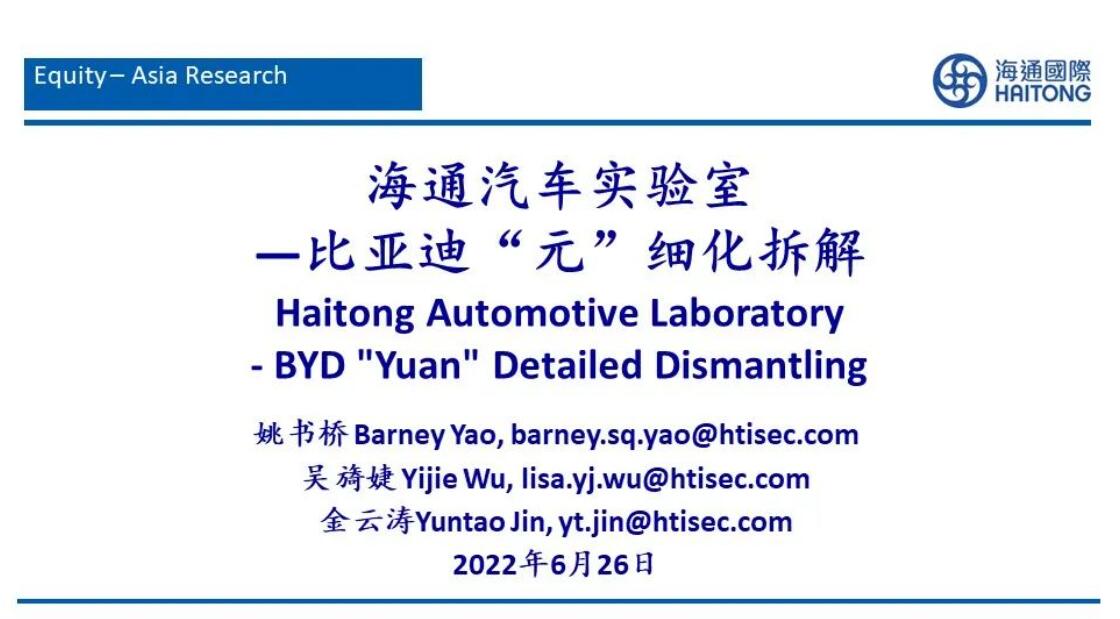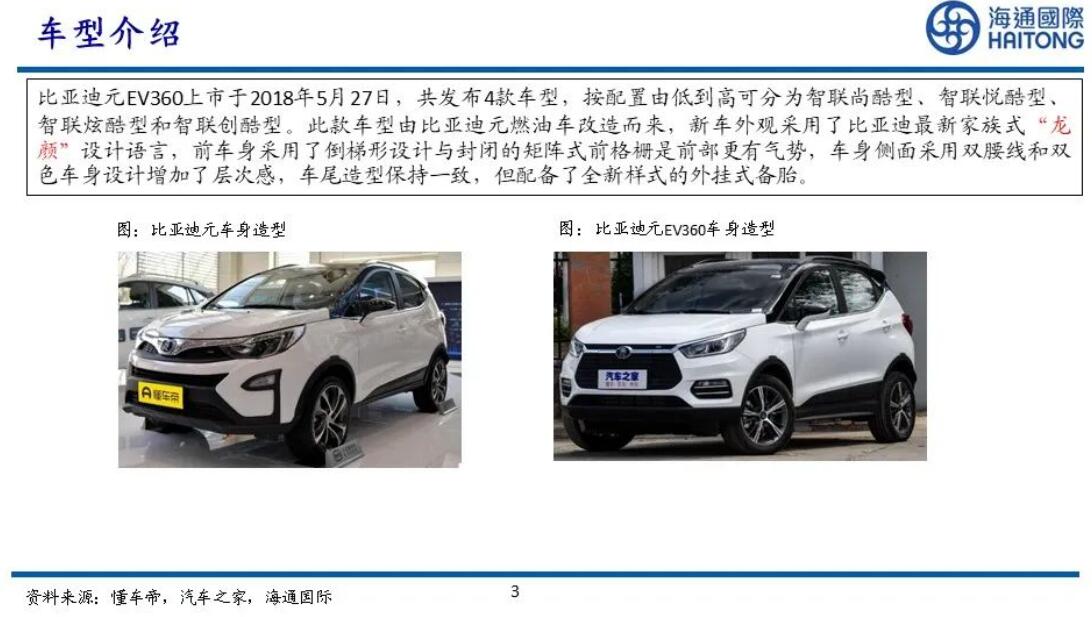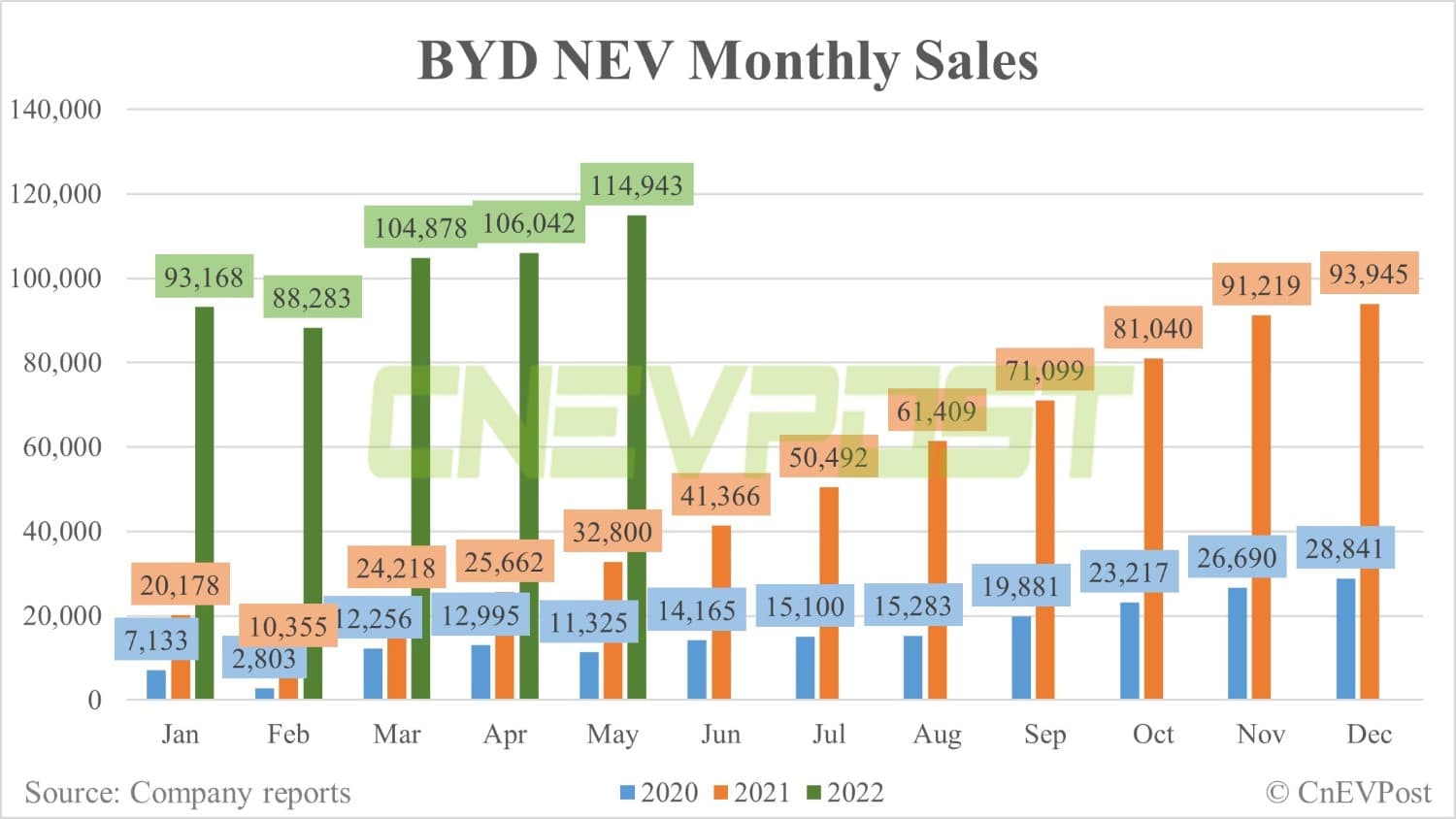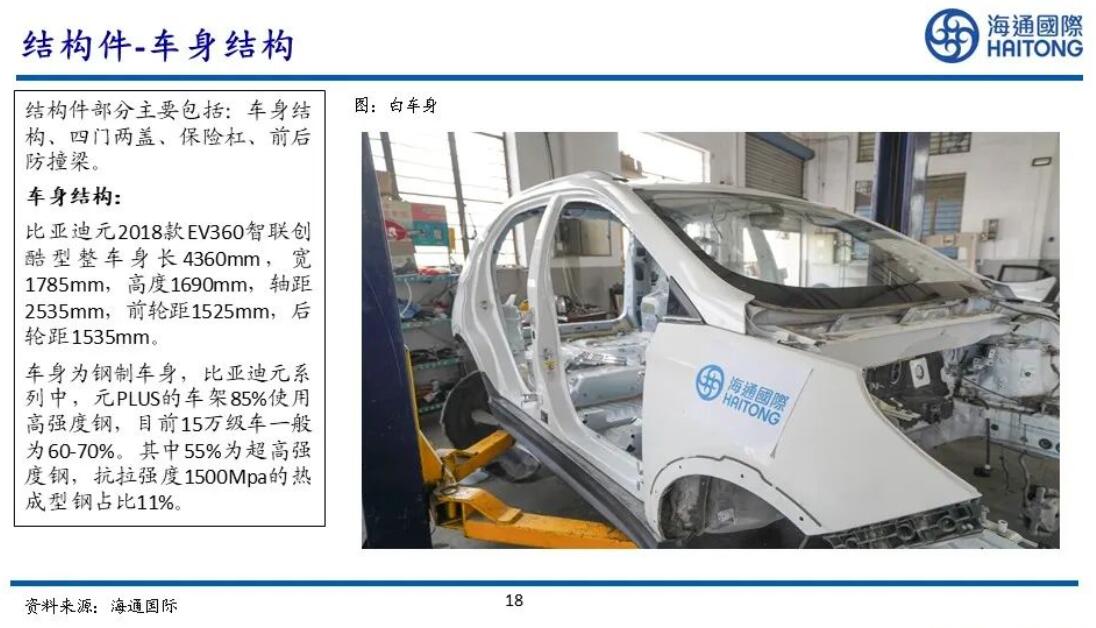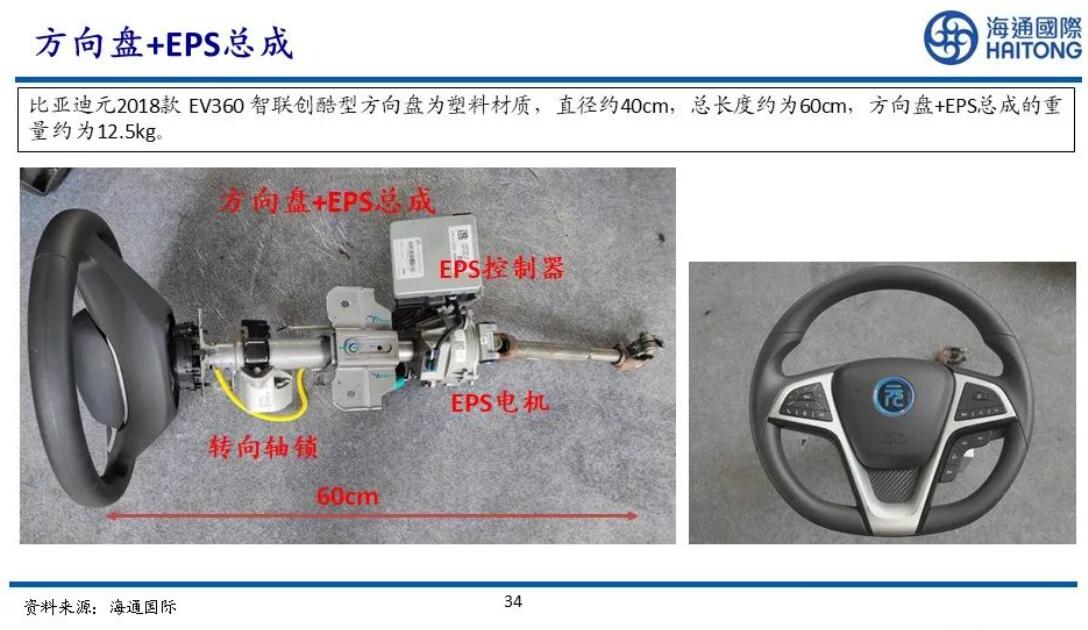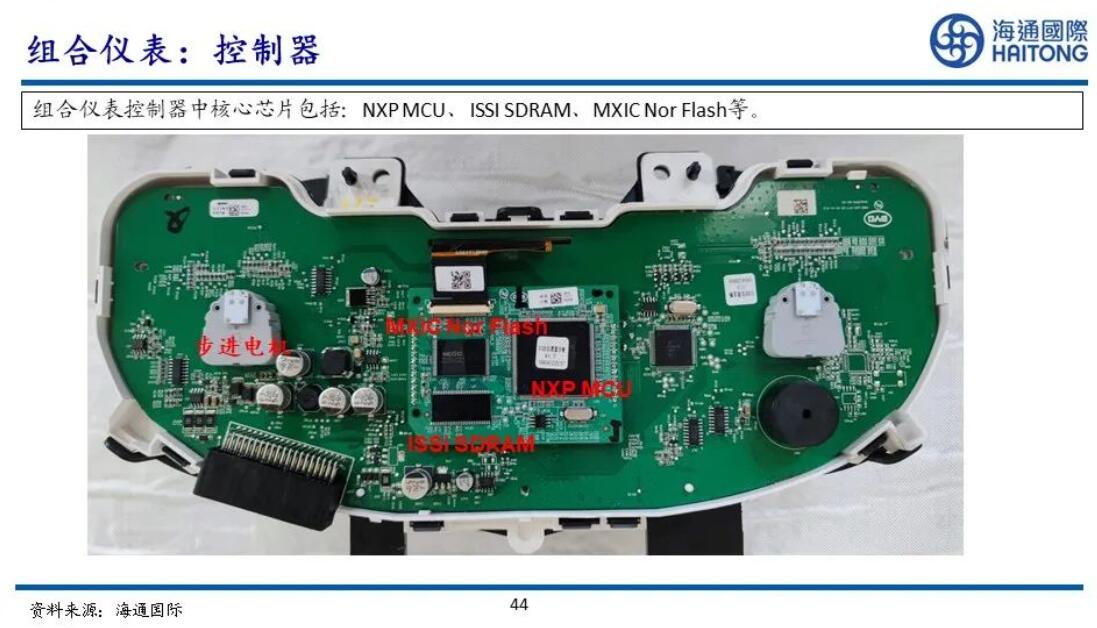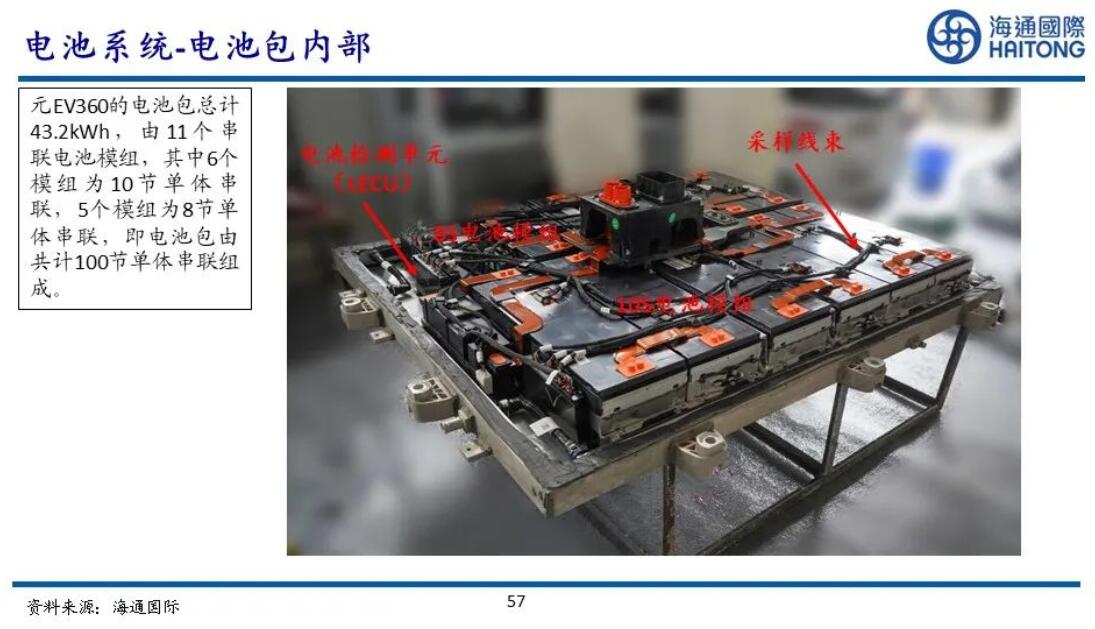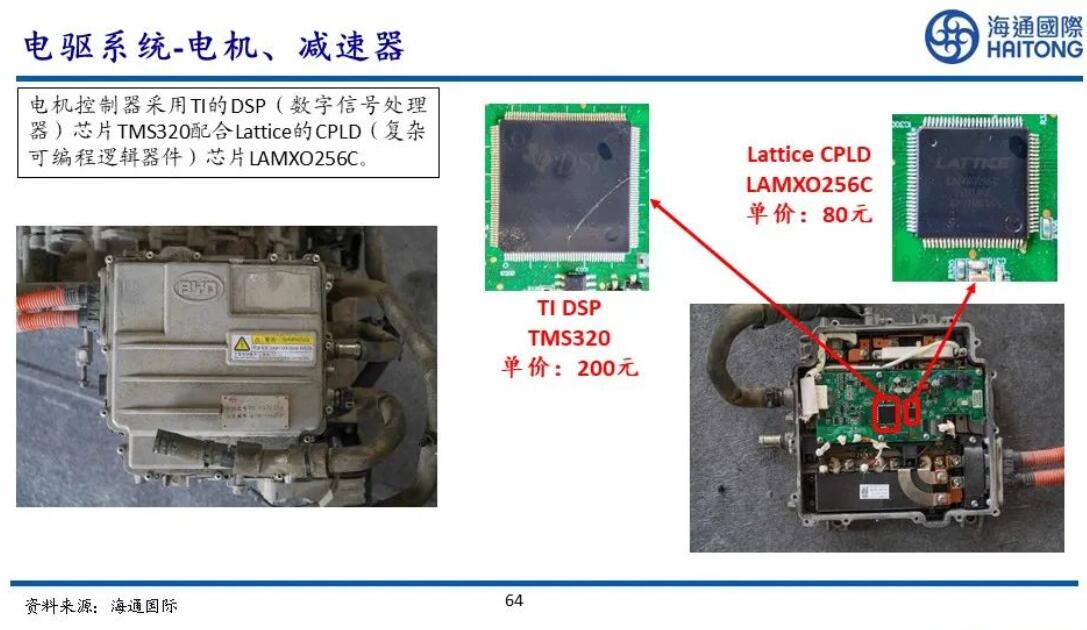In an 87-page report, analysts at Haitong International documented its disassembly of a BYD Yuan EV in detail.
As China's largest new energy vehicle (NEV) maker, BYD (SHE: 002594, HKG: 1211, OTCMKTS: BYDDY) has attracted a lot of analyst attention. And this team of analysts went even further, dismantling a model from the company.
Haitong International analysts Barney Yao, Wu Yijie and Jin Yuntao released an 87-page report on June 26 showing details of their disassembly of a BYD model, the first time local analysts have done so.
It is worth noting, however, that for cost reasons, they dismantled not BYD's flagship models, including the Han, but a Yuan EV 360 that was launched in May 2018 and has accumulated 78,000 kilometers of driving range.
The model was based on a BYD conversion of one of its internal combustion engine (ICE) cars, which was then offered in four versions priced at RMB 79,900 ($11,930), 85,900, 93,900 and 99,900. It was the first model in BYD's history to see sales of more than 10,000 units in a single month.
The Yuan EV 360 is based on BYD's e-platform 2.0, the previous generation of the current BYD electric vehicle (EV) platform. BYD launched e-platform 3.0 last September and has launched several models based on it in the past year, including the latest Seal sedan.
Haitong's report details their dismantling of the Yuan EV 360 and their presentation of the components in 50 pages, showing very thorough details.
This is the first time Haitong's automotive team has disassembled a vehicle in hopes of showing the details of the components with first-hand data, the team writes in its report.
"This approach is rare in China, but standing in a global perspective, dismantling cars is not a research approach unique to us," Barney Yao, the report's first author, was quoted as saying in a Securities Times report today.
Yao said he dismantled computers as a child and many cell phones over the past years, so it was natural for him to want to dismantle an EV model as the age of EVs approaches.
"I've always wanted to dismantle a BYD because it epitomizes the transformation and upgrading of China's manufacturing industry," Yao said, adding, "Of course, this 2018 Yuan is nowhere near the BYD vehicles of today, either in terms of appearance or intelligence."
The Yuan model allows you to understand BYD's history and see how far it has come, but of course, there are cost considerations involved, Yao said.
Both Haitong International and Haitong Securities' automotive teams participated in the dismantling, with about a dozen people involved throughout, and the completion of the report took them two to three months, according to Yao.
BYD halted production of traditional ICE vehicles in March in order to fully shift to NEVs. Since March, the company has sold more than 100,000 NEVs for three consecutive months.
BYD's order backlog is as high as 600,000 units, with a delivery cycle of five to six months, National Business Daily said earlier this month, citing minutes of a BYD shareholders' meeting.
BYD's shares traded in Shenzhen rose 8.19 percent to RMB 348.8 at the close of trading on June 10, giving it a total market capitalization of RMB 1.02 trillion, exceeding RMB 1 trillion for the first time.
The market capitalization of RMB 1 trillion is a new starting point for BYD, and the company's efforts in the high-end market, global market, and smart driving will open up new growth space, said CITIC Securities, another local brokerage, in a June 13 research report.
CITIC Securities sees BYD's auto business, power battery business, and BYD Electronics valued at RMB 950 billion, RMB 330 billion, and RMB 100 billion, respectively, in 2023, implying a reasonable value of RMB 1.4 trillion for BYD, according to the team.
Here are more screenshots from the research report by Haitong International.

